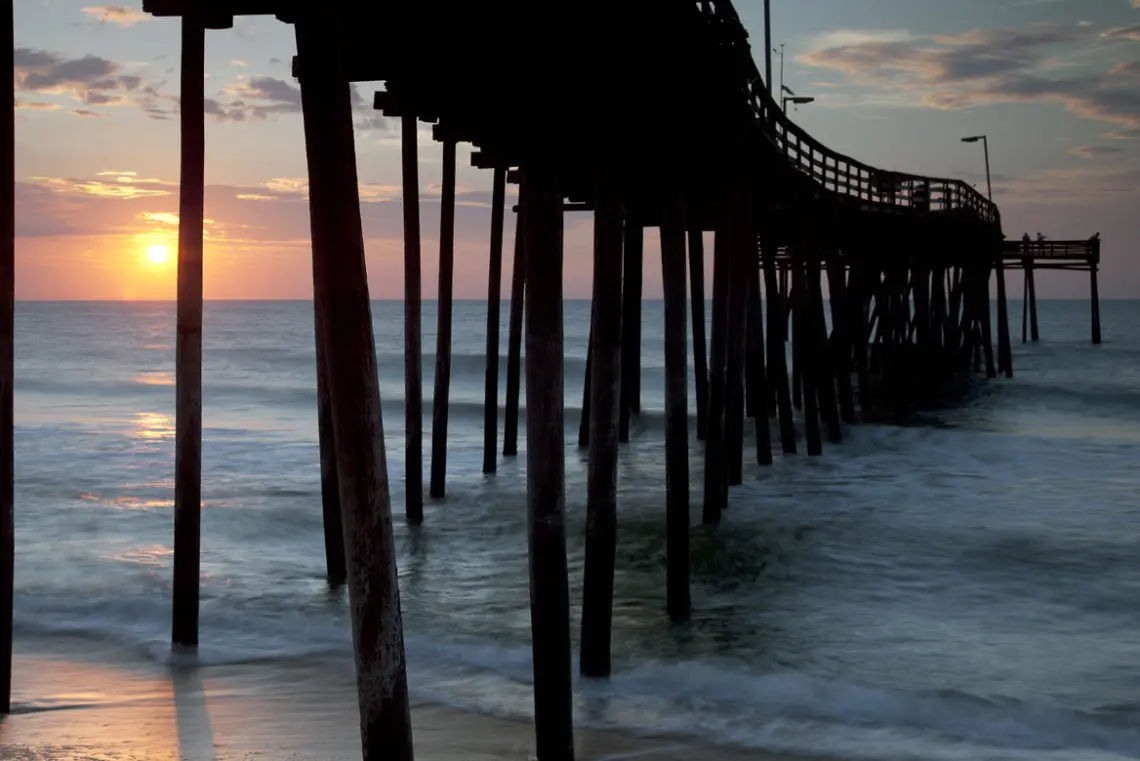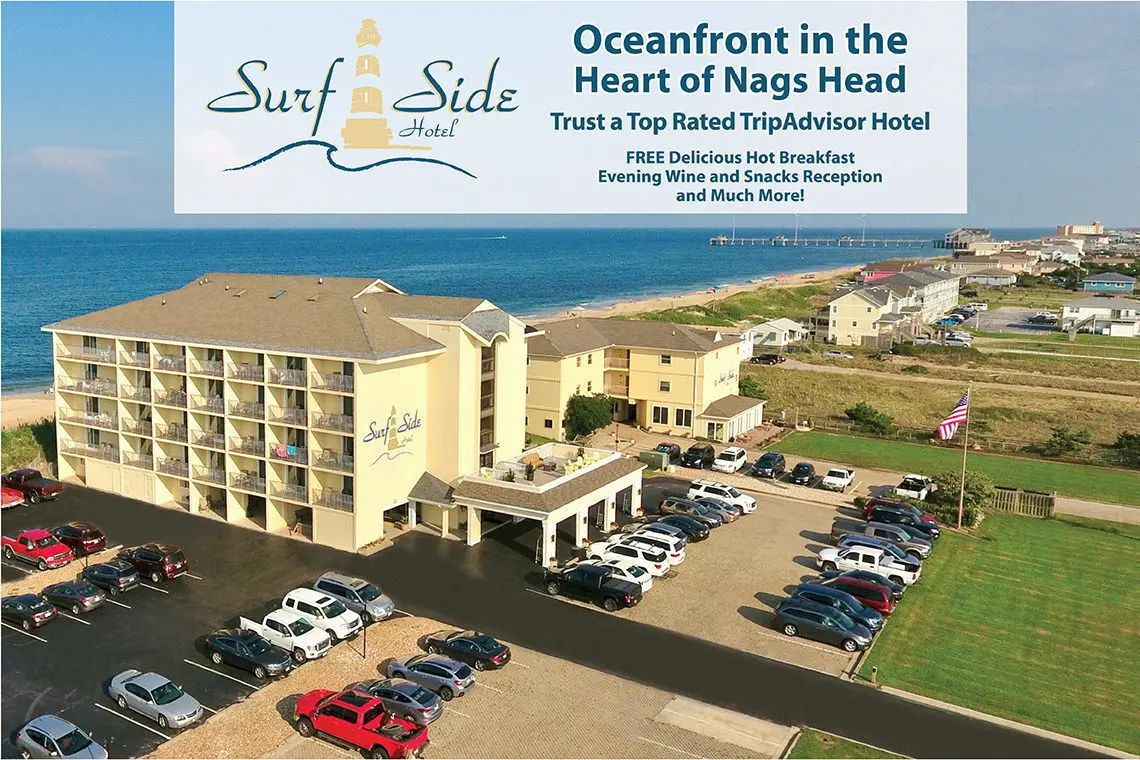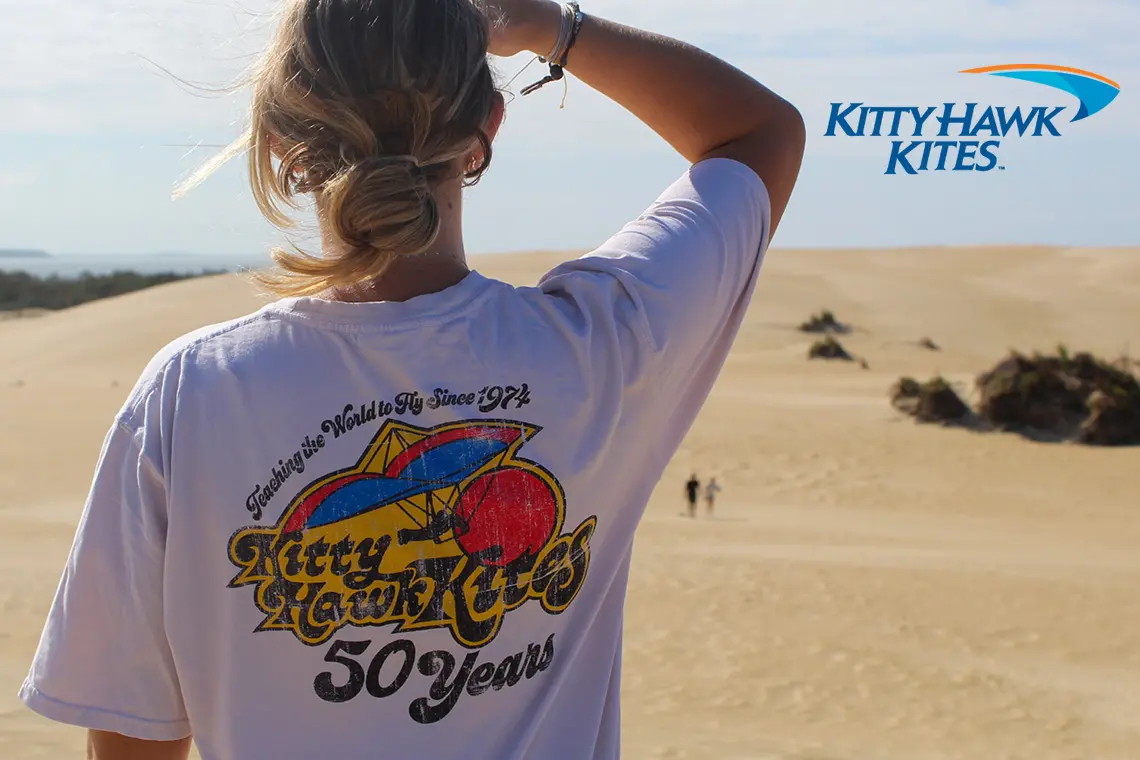The Outer Banks are a chain of narrow barrier islands that sweep south from the Virginia line in three distinct arcs punctuated by two capes, Hatteras and Lookout. They cover some of the most historic real estate in the country, beginning with the origins of English America on Roanoke Island.
Fort Raleigh National Historic Site was established on the north end of Roanoke Island on the site of the first English settlement in North America--the famous Lost Colony
. Today, the 500-acre park encompasses the remnants of the colony's 1585 fort, Historic Waterside Theatre where Paul Green's drama, The Lost Colony
has played since 1937, the fabulous Elizabethan Gardens, and the site of the Freedman's Colony, the first organized settlement of freed slaves during the Civil War.
Just down the street from Fort Raleigh, the North Carolina Aquarium on Roanoke Island is one of three state-supported aquariums on the coast.
The highlight of nearby downtown Manteo waterfront is the Roanoke Island Festival Park. The Park is home to a variety of historical interpretive activities in the summer, as well as performing and visual arts events. The most visited attraction of the Park is the Elizabeth II, a replica of the ship that brought the first colonists to Roanoke Island.
On the northern Outer Banks, visitor will find a wealth of natural and manmade attractions. In Nags Head, the dunes of Jockey's Ridge tower up to 100 feet above the beaches and are one of North Carolinas most visited state parks. In stark contrast, just north of the sand dune, the verdant maritime forest of Nags Head Woods Ecological Preserve offers visitors a commune with nature.
The site of the Wright Brothers' first flight in Kill Devil Hills is now a National Memorial, featuring a massive granite monument and interpretative visitor center. Plans for the Centennial of First Flight in 2003 are already underway.
Further north in the quaint village of Corolla, visitors can stroll the grounds of the once-regal Whalehead in Historic Corolla. Built as hunt club for northern industrialists in the late 19th century, the club is being restored and serves as a wildlife museum. Adjacent to the Club stands the red brick Currituck lighthouse, open for climbing in the summer.
The Cape Hatteras National Seashore begins south of Nags Head and encompasses more than 75 miles of pristine beach from Oregon Inlet to Ocracoke Village. The Seashore was created in 1954 and is the oldest in the country. Many individual attractions await visitors.
Just south of Nags head is one of the best beaches on the Outer Banks, Coquina Beach. Named after the preponderance of small clams that litter the beach in the summer months, this wide white shore is a popular spot for locals. The remains of the schooner Laura A. Barnes rest here, and on the west side of Highway 12 stands the stately Bodie Island Lighthouse.
Highway 12 crosses Oregon Inlet via the Herbert C. Bonner Bridge, and from its apex, drivers get a good look at one of the most dynamic and changeable inlets on the east coast. On the north side of the inlet, fishermen can board a charter for a day offshore at the Oregon Inlet Fishing Center.
A few miles south of the inlet, wildlife enthusiasts have a fantastic opportunity to view hundreds of species of migrating waterfowl at the Pea Island National Wildlife Refuge. In February, the ponds and sound are white with Canadian snow geese.
In the town of Rodanthe, the Chicamocomico Lifesaving Station is a restored lifesaving station from the late 1880s. In the summer, re-enactors produce beach rescues, and the station serves as a living memorial to the men who protected these shores.
Just south of Avon, on the Pamlico Sound, hundreds of Canadian windsurfers descend on Canadian Hole, one of the best-known Windsurfing spots on the east coast. The waters are covered with hundreds of colorful sails on blustery spring and fall days.
At Cape Hatteras Point, the Outer Banks shift abruptly to the west, marking the point where the cold waters of the Labrador Current and the warm Gulf Stream come together. Here is some of the greatest fishing in the world and also the most dangerous landhead on the east coast. The Cape Hatteras Lighthouse was built nearby in 1871 to warn ships away from the shoals. In the summer of 1999, the lighthouse itself was in danger of collapsing into the approaching surf. The National Park Service moved the structure 1,200 feet inland, where it still stands guard today.
Buxton Woods represents one of the oldest maritime forests on the east coast. A stroll through the woods offers visitors an unique ecology of northern and southern plant and animal species. The woods were once home to a local tribe of Croatan Indians, and the Frisco Native American Museum features their story, plus an amazing look at all Native American cultures.
At Hatteras Village, visitors hop aboard one of North Carolina's six ferries for a 40-minute ride to historic Ocracoke Island. This 12-mile long island is part of the Cape Hatteras National Seashore. At the Ocracoke Pony Pen on the east end of the island, visitors can view the remaining herd of wild ponies that once roamed the island in profusion.
At the west end of the island, the village of Ocracoke represents the laid back life of a seaside village. Blackbeard the pirate once made the area his base of operations, and it was just offshore here that he lost his head to the British Navy in 1718. The Ocracoke Lighthouse still guides boats into the placid harbor.
Just across Ocracoke Inlet lies the deserted village of Portsmouth. Once the leading port in North Carolina, the village slowly declined until the last of its residents left the island in 1974. Today, the National Park Service maintains the dwellings.
Portsmouth marks the northern end of the cape lookout national seashore, which extends southwestward for 80 miles. Access to the Seashore is by boat only, and several Park Service concessionaires offer ferry service to the deserted barrier island.
At the southern tip of the Seashore, Cape Lookout is the second of the three North Carolina capes. The distinctive Cape Lookout Lighthouse guards the treacherous Lookout Shoals. Situated in the lee of the Cape are Shackleford Banks and the Rachel Carson Estuary, home to a hard of wild horses and other wildlife. Shackleford Banks mark the southern terminus of the Outer Banks.
Our oceanfront hotel rooms in Nags Head, North Carolina provide the absolute best views of the Atlantic Ocean! In addition to the gorgeous view, we also offer a great selection of amenities to our guests, including hot tubs, indoor and outdoor...
KEES Vacations offers the best Outer Banks rentals for family vacations, romantic weekend getaways and groups of all sizes looking for the perfect OBX rental for their stay. When booking with KEES Vacations, travelers can expect excellence in...
You haven’t experienced North Carolina until you’ve experienced North Carolina BBQ, and Pigman’s Bar-B-Que offers excellent North Carolina BBQ meals served with southern hospitality. Pigman’s offers traditional eastern...
Founded as the world's first hang gliding school in 1974, Kitty Hawk Kites has grown into a beloved retail and outdoor recreation venture with more than 28 locations up and down the east coast! With more than 50 years of teaching the world to fly...




